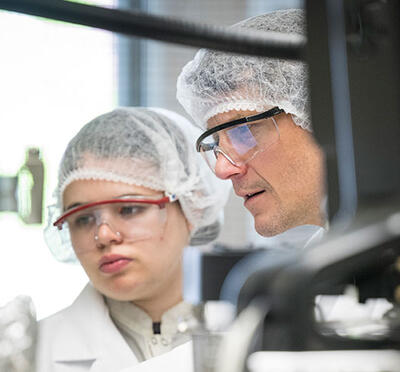In the innovative realm of bioengineering sensor technology, Oregon State University, in collaboration with HP, is pioneering a transformative approach to lab-on-chip applications. This partnership, blending academic research and industrial expertise, is developing advanced platforms for cell counting and biosensing, utilizing the integration of integrated circuits with microfluidic devices and sensors. These innovations hold promise for broad applications, including health care, environmental monitoring, biotechnological research, and pharmaceutical testing, potentially revolutionizing these fields with enhanced accuracy and efficiency.
Innovative integration and heterogeneous substrates
Central to this collaboration is integrating Oregon State’s expertise in cell sensing and biosensing with HP’s microfluidic technology. The objective is to create a heterogeneously integrated substrate, marrying microfluidic precision with integrated circuit functionality. Such integration is pivotal for advancing applications in various sectors, from rapid and precise medical diagnostics to enabling new methodologies in drug development and environmental analysis.
Leading this groundbreaking project is Matthew L. Johnston, associate professor of electrical and computer engineering at Oregon State. Johnston’s role is instrumental in overcoming traditional barriers in fluid sample delivery to chip surfaces, challenges often posed by conventional wire-bond packaging. Innovative solutions like wafer-level over-molding and fan-out wafer-level packaging are employed, enabling scalable integration of microfluidic channels with silicon-integrated circuit substrates. This approach enhances capabilities for optical transmission and fluorescence measurements, crucial in custom CMOS optical sensor ICs.
CDADIC’s role in nurturing innovation
Highlighting the critical role of academic support in such innovative endeavors, Johnston acknowledges the Center for Design of Analog-Digital Integrated Circuits at Oregon State. “The support from CDADIC has been invaluable, especially during the early and crucial stages of our research,” he said.
Enhanced capabilities through advanced fabrication techniques
The HP-Oregon State project not only focuses on integrating existing technologies but also on developing advanced fabrication techniques for creating these novel substrates. Techniques such as high-precision 3D printing and advanced material deposition methods are explored to achieve the desired level of integration and functionality. These techniques are crucial for ensuring that the lab-on-chip devices can operate under various conditions, maintaining their integrity and accuracy.
Future perspectives and global impact
The partnership between Oregon State and HP is redefining the standards in lab-on-CMOS development. The potential global impact of this technology is significant. In healthcare, lab-on-chip devices could lead to more personalized medicine approaches, enabling doctors to diagnose and treat diseases with unprecedented precision. In environmental science, these sensors could play a critical role in monitoring and addressing ecological challenges. In the pharmaceutical industry, the technology could revolutionize the drug discovery process, making it faster and more efficient. This pioneering endeavor is creating a paradigm shift in lab-on-chip technologies, promising not only groundbreaking applications across diverse sectors but also heralding a new era of integrated, efficient, and precise bioengineering solutions.
To explore collaborative opportunities, or the semiconductor program in general, get in touch with us at: semi-osu@oregonstate.edu.




